Usage limits
Metered features can be defined with a limit or without one (unlimited).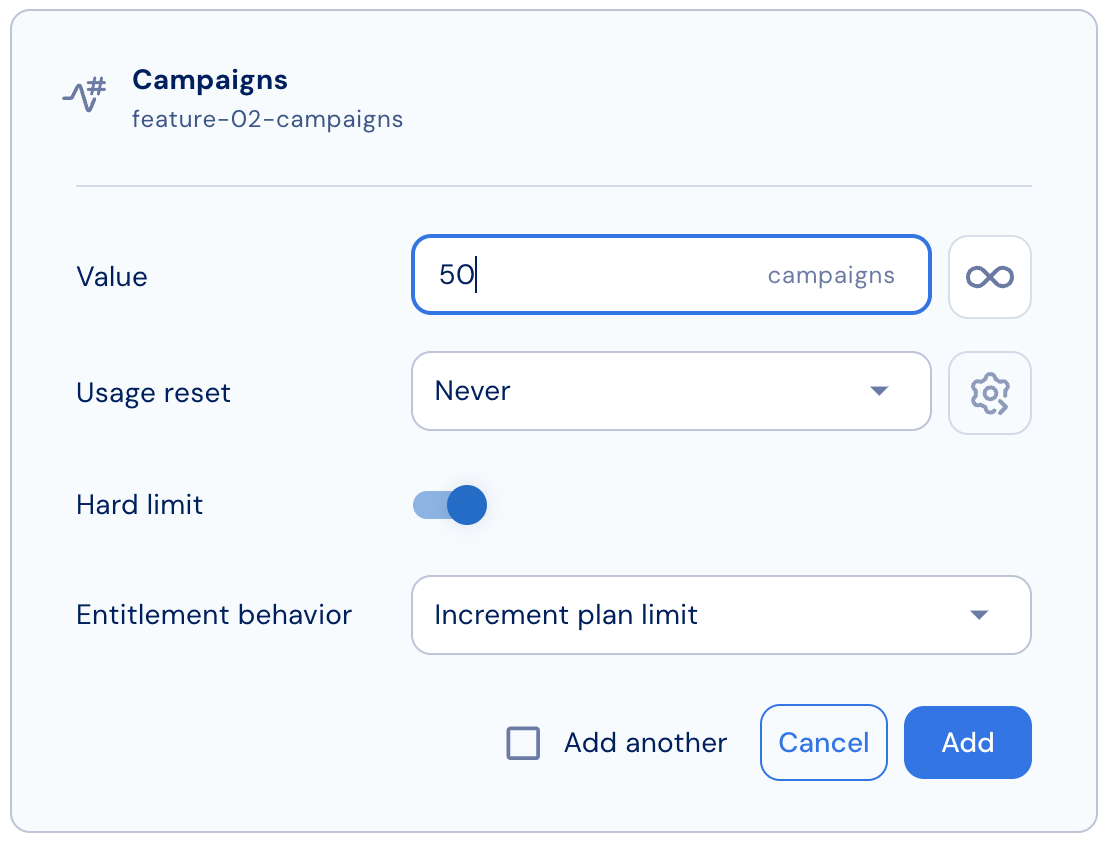
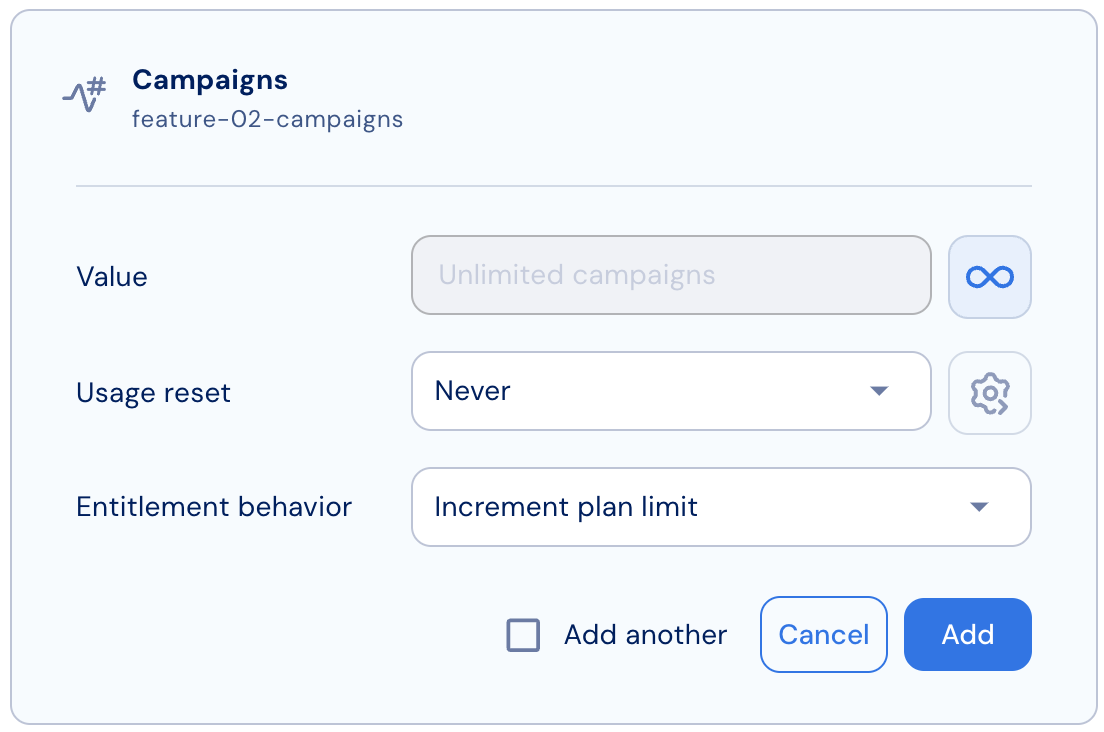
Limit enforcement
To configure limit enforcement for metered features:- Set a usage limit for the feature.
- Choose whether Stigg should enforce the limit or allow usage beyond it:
- If the limit is enforced, Stigg will deny further access once the customer reaches the limit.
- This configuration is known as a hard limit and is the default for all Stigg entitlements.
- If the limit is not enforced, Stigg will continue granting access even after the limit is exceeded.
- This configuration is known as a soft limit.
- If the limit is enforced, Stigg will deny further access once the customer reaches the limit.
- Review the table below for a summary of the two configurations:
| Hard limits | Soft limits | |
|---|---|---|
| Customers can exceed the defined limit | ❌ | ✅ |
| Useful for | 1. Enforcing access in free plans.2. Driving conversions, upsells and expansions. | 1. In enterprise plans, to prevent disruptions to customers’ business - excessive usage is commonly leveraged for discussions with sales, CS and account executives about expansion and increased commitment. 2. When implementing an automatic smart upgrade flow to a higher tier based on customer usage instead of charging for overage - upgrades help increase recurring revenue, where overage charges are less predictable.3. During the initial integration with Stigg - companies that already have soft limits defined today and want to gradually rollout the integration with Stigg, can do so while activating enforcement at a later stage without any additional code changes. |
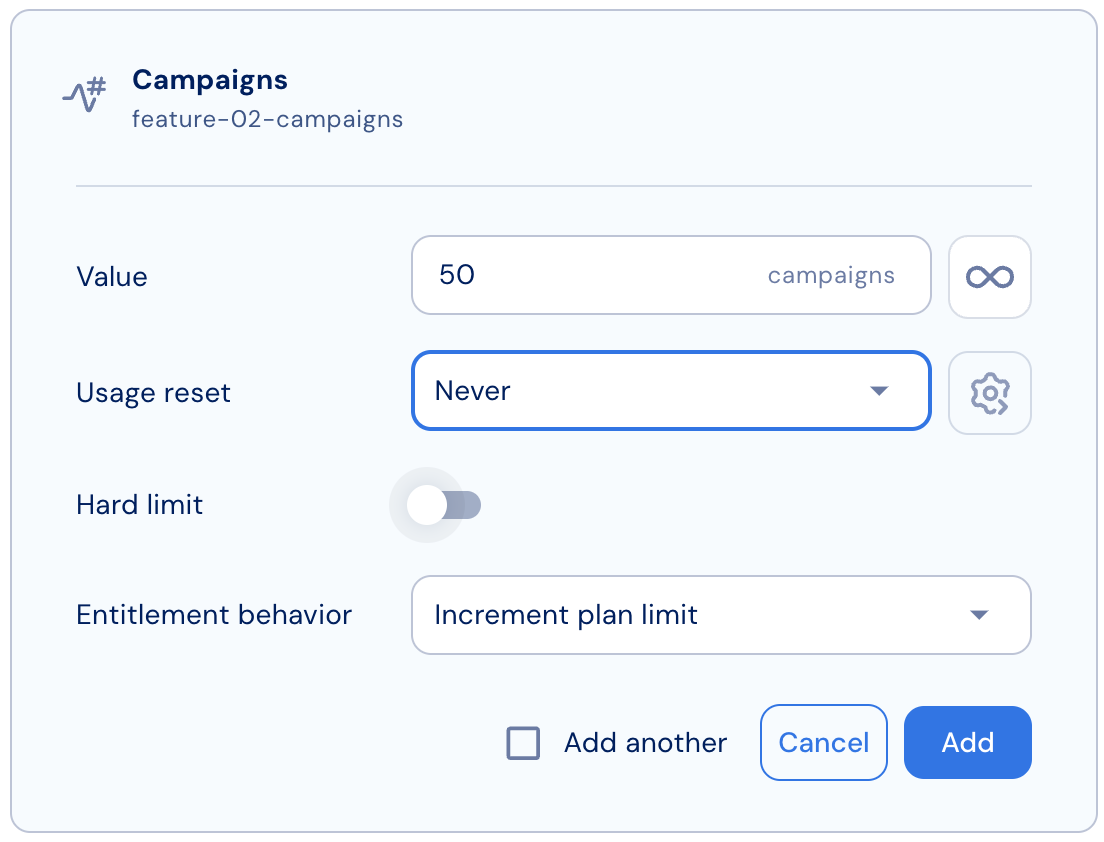
Soft limit
Usage reset
Stigg can automatically reset measured usage at predefined intervals — yearly, monthly, weekly, daily, or hourly. This is useful for usage-based features such as tracking the number of API calls per month.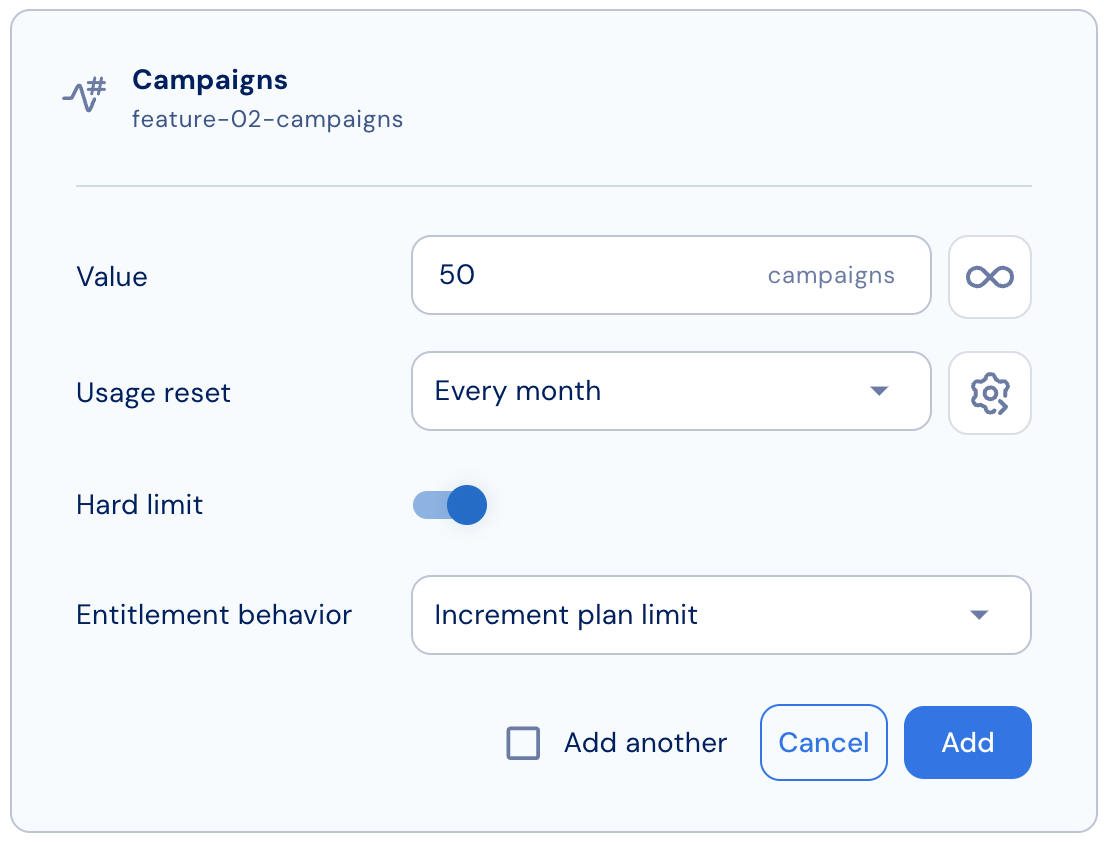
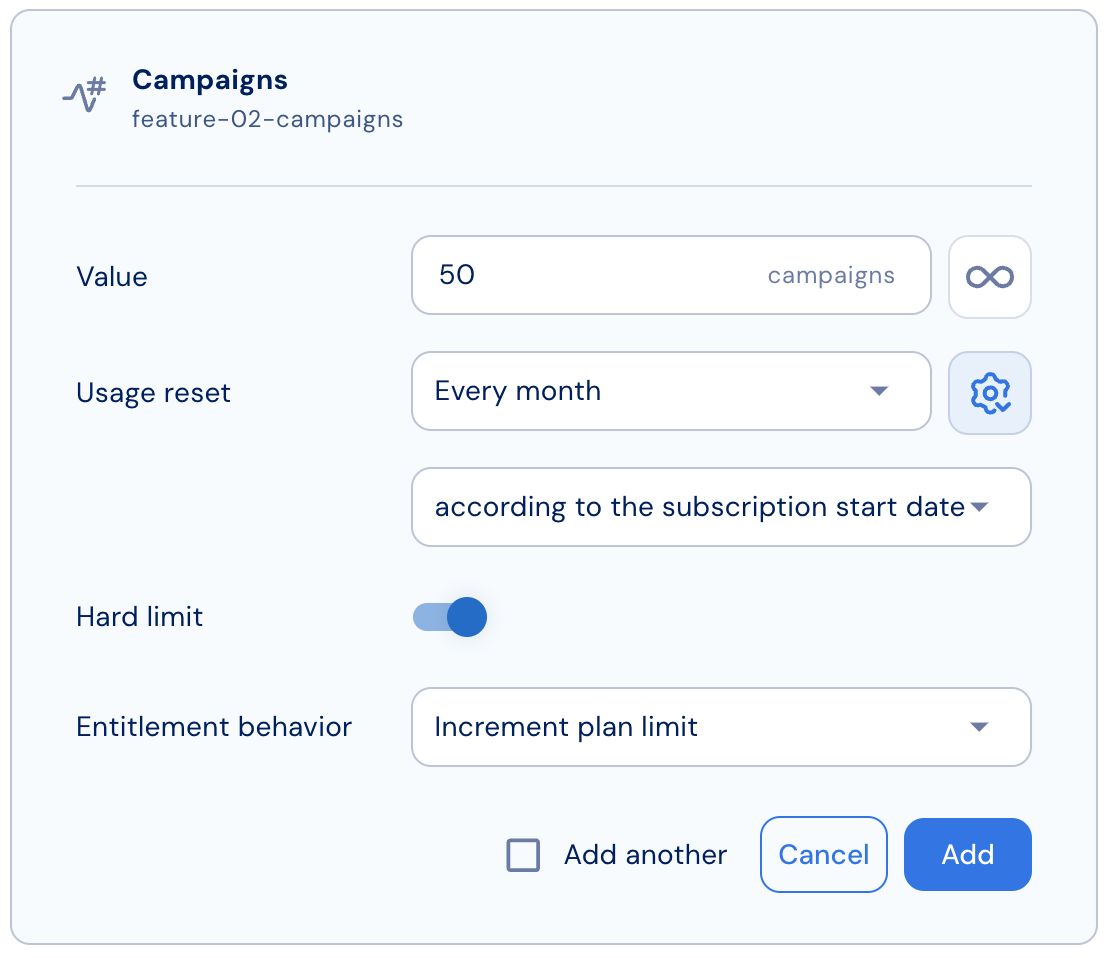
Advanced usage reset configuration
